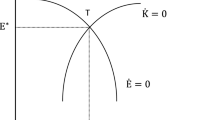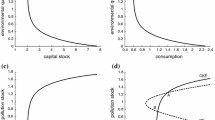Abstract.
This paper presents a simple general equilibrium analysis of first best allocations in an economy where a consumption good is produced using labor. Production results in pollution, which is a public bad. Pollution abatement can be achieved either by restricting production or by using additional labor. We consider how the first best allocation and Pigouvian tax vary with population size. Consumers are unambiguously worse off when the population is larger, but not necessarily due to increased pollution. In fact, optimal policy on how pollution and labor should vary with population size is very sensitive to preferences and technology. The best response to an increase in population size might be either to increase or to decrease emissions and/or labor, depending on functional forms and parameters. However, given separable preferences and some convexity, the optimal emissions tax increases, and the first best level of per-capita consumption decreases with population size. The paper also considers the extent to which exogenous technical progress can overturn these conclusions.
Similar content being viewed by others
Author information
Authors and Affiliations
Additional information
Received August 28, 1996 / Accepted January 27, 1997
Rights and permissions
About this article
Cite this article
Cronshaw, M., Requate, T. Population size and environmental quality. J Popul Econ 10, 299–316 (1997). https://doi.org/10.1007/s001480050045
Issue Date:
DOI: https://doi.org/10.1007/s001480050045




